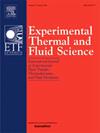An experimental acoustofluidic system for analyzing boundary-driven acoustic streaming generated by flat and curved walls
Abstract
While boundary-driven acoustic streaming in fluids surrounded by flat walls has been extensively studied in the literature, theoretical studies on boundary-driven acoustic streaming generated by curved walls have recently emerged. This paper aims to present a quantitative analysis of acoustic streaming fields driven by forces induced by both flat and curved walls. A semi-circular channel made of stainless steel was designed to serve as a model channel with both flat and curved boundaries. A multi-layered glass-steel-glass device, actuated by a piezoelectric transducer, was assembled for experimental characterization of boundary-driven acoustic streaming in such scenarios. First, the various standing acoustic modes in the semi-circular channel were measured through the acoustophoretic patterning of 20 µm polystyrene particles. Next, the acoustic radiation force fields and boundary-driven acoustic streaming patterns under various resonant acoustic modes were characterized through micro-particle-image-velocimetry measurements of the motion of 20 µm and 1 µm polystyrene particles, respectively. Finally, the experimental results were explained using efficient finite element simulations of acoustofluidics and acoustophoresis in a semi-circular reduced-fluid model, with a focus on analyzing the streaming velocities driven by the flat and curved walls. Both experimental and numerical results demonstrated that the ratio of streaming velocities induced by the flat wall and the curved wall in this semi-circular channel depends on the resonant acoustic modes. This research highlights the diverse boundary-driven acoustic streaming patterns that arise in irregular channels and provides a theoretical foundation for choosing strategies for shape optimization to suppress acoustic streaming in acoustofluidic devices.

 求助内容:
求助内容: 应助结果提醒方式:
应助结果提醒方式:


